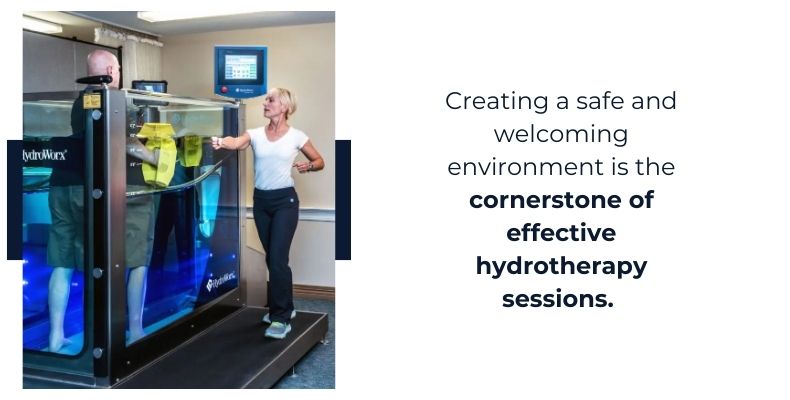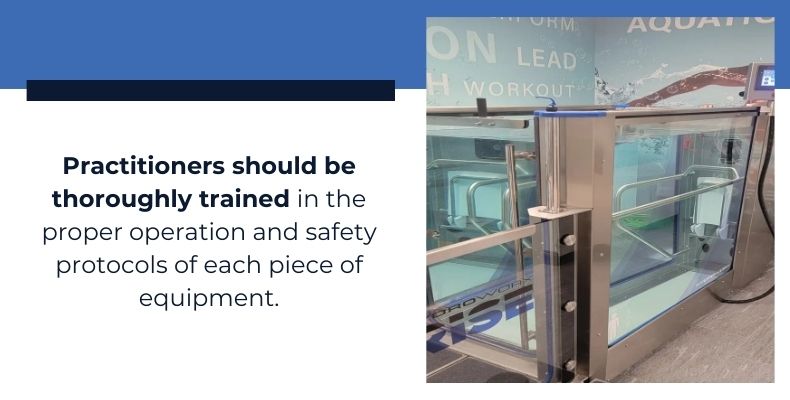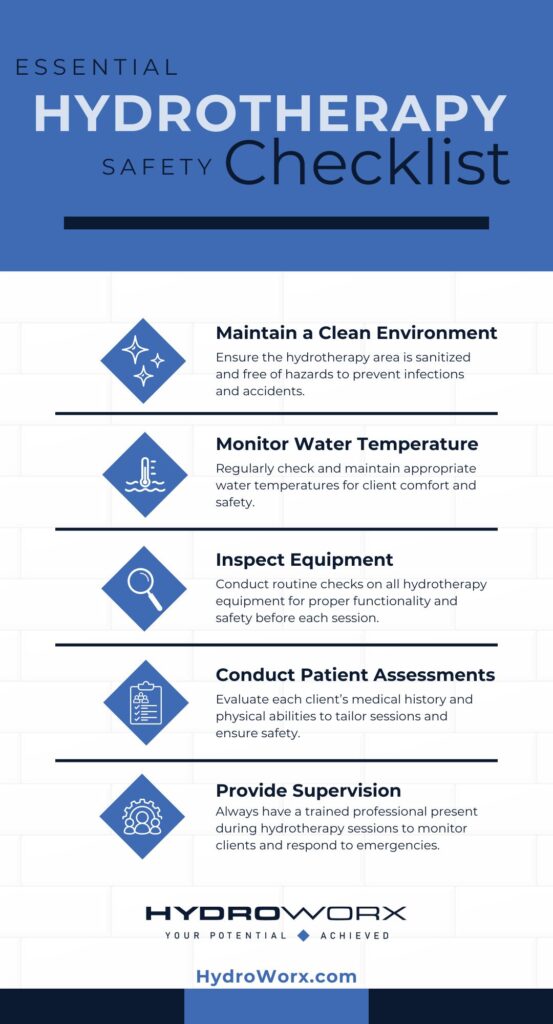Hydrotherapy Safety Tips: Guidelines for a Successful Treatment Session
Hydrotherapy has become an essential component of rehabilitation and fitness programs. The therapeutic benefits of aquatic exercise can significantly enhance recovery, improve mobility, and promote overall wellness. However, ensuring safety during hydrotherapy sessions is crucial for effective treatments and preventing injuries. Understanding best practices helps facilities provide a secure environment for their clients while maximizing the benefits of aquatic therapy.
This article from HydroWorx outlines essential safety tips and guidelines for hydrotherapy sessions, specifically tailored for fitness and rehabilitation professionals. By implementing these guidelines, facilities can create an optimal atmosphere that prioritizes safety and encourages positive outcomes for all participants. Whether you’re new to hydrotherapy or looking to refine your existing practices, these tips will empower your team to facilitate successful and secure hydrotherapy experiences.

Preparing the Environment
Creating a safe and welcoming environment is the cornerstone of effective hydrotherapy sessions. Start by ensuring your hydrotherapy area is thoroughly clean and well-maintained, as cleanliness prevents the risk of infections and promotes client comfort. Maintaining an appropriate temperature is equally important; the water should be warm enough to prevent discomfort but not so hot as to pose any risks.
Additionally, mitigating hazards within the hydrotherapy space is vital. Ensure all surfaces are slip-resistant to prevent accidents, particularly in areas that may become wet. Regularly inspect equipment, including underwater treadmills and resistance jets, to ensure they are functioning correctly and pose no safety risks. Clear pathways and ensure that emergency equipment, such as first-aid supplies, is easily accessible. A well-prepared environment sets the stage for successful hydrotherapy sessions, supporting both safety and effectiveness.
Assessing the Patient
Thorough patient assessment is essential for ensuring safety and effectiveness during hydrotherapy sessions. Prior to initiating any treatment, fitness facilities and rehabilitation centers should conduct comprehensive evaluations of each individual’s medical history, physical condition, and specific needs. This includes identifying any pre-existing medical conditions, injuries, or mobility limitations that may affect the patient’s ability to participate in hydrotherapy safely.
Implementing a standardized assessment form can help practitioners gather the necessary information to tailor each session to the individual’s capabilities. Additionally, it is vital to establish clear communication with clients, encouraging them to voice any concerns or discomfort before and during the session. Engaging in this dialogue can provide insights into the patient’s comfort level, allowing for adjustments to be made as necessary.

Equipment Safety
Ensuring the safety of hydrotherapy equipment is critical for the well-being of clients during treatment sessions. All equipment, such as underwater treadmills, resistance jets, and buoyancy aids, should be regularly inspected for functionality and safety. Implement a routine maintenance schedule to address any potential malfunctions before they become issues during treatment.
Practitioners should be thoroughly trained in the proper operation and safety protocols of each piece of equipment, ensuring they understand its features and limitations. It is also crucial to familiarize clients with the equipment prior to their sessions, explaining its purpose and functionality. This helps clients feel more at ease and aware of what to expect.
Supervision and Support
Effective supervision and support during hydrotherapy sessions are essential for maintaining a safe environment and providing optimal care for clients. Facilities should always have trained professionals available to oversee each session, ensuring that participants are closely monitored throughout their workouts. This level of supervision allows staff to provide immediate assistance or intervention if any safety concerns arise.
Communication is key during these sessions; staff should maintain open lines of communication with clients, encouraging them to express their feelings about the treatment and report any discomfort or issues as they arise. Additionally, employing a buddy system or having another staff member present can further enhance safety, providing additional support for clients and enabling prompt response to any emergencies.

Monitoring Progress and Comfort
Monitoring progress and comfort throughout hydrotherapy sessions is essential for ensuring client safety and optimizing treatment benefits. Practitioners should regularly assess participants’ responses during exercises, observing for any signs of discomfort, fatigue, or difficulty in movement. Taking notes on clients’ performance and their subjective feelings about the session can offer valuable insights for tailoring future hydrotherapy treatments and adjusting intensity levels appropriately.
Encouraging clients to provide feedback during and after sessions can help practitioners understand their comfort levels and identify any areas of concern. Implementing a standardized feedback form can facilitate this process, making it easier to document and address client needs effectively. Regularly evaluating progress against established goals, such as improvements in strength, mobility, or endurance, provides a measurable way to demonstrate the effectiveness of the hydrotherapy program.
Post-Treatment Care
Post-treatment care is a critical step in enhancing the benefits of hydrotherapy and ensuring clients’ well-being after their sessions. Start with a proper cool-down period, allowing clients to gradually transition from the aquatic environment to a stable state, which can help prevent injuries and minimize muscle soreness. Encourage clients to hydrate adequately and provide water to help replenish fluids lost during the session.
Follow-up care is equally important, involving discussions about clients’ experiences during the session, as well as any areas of discomfort or pain. This dialogue assists practitioners in adjusting future treatments to better suit individual needs. Establishing a clear aftercare routine can make a significant difference in recovery results, including personalized exercise recommendations or home care instructions.

Schedule a HydroWorx Demo Today
As hydrotherapy continues to gain recognition for its therapeutic benefits, practitioners must be well-prepared to offer high-quality treatment while keeping safety at the forefront. For facilities interested in enhancing their hydrotherapy offerings, consider exploring HydroWorx hydrotherapy solutions that combine innovative design with safety features. Contact us today to learn more about how our products can elevate your hydrotherapy programs and improve client outcomes.

